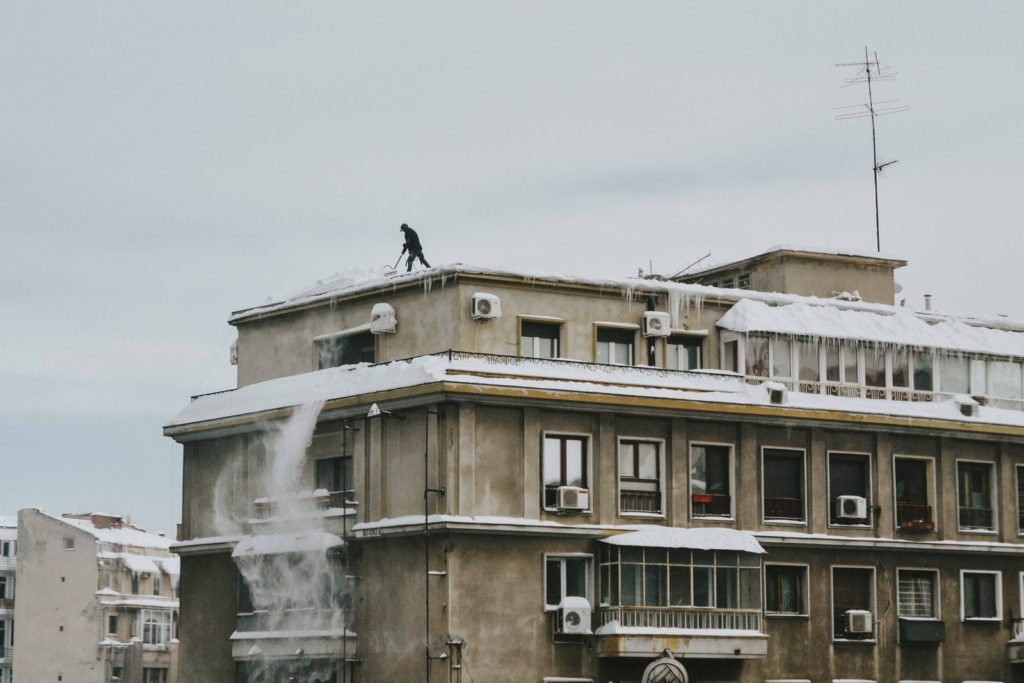The life of an eavestrough seems to be under attack from prejudicial attacks. A rising incidence of tearing off of eavestroughs is being reported all across Canada during wintertime and the root cause is ignorance.
The sheer sight of mounds of ice accumulating behind eavestrough in Toronto is enough reason to make people lose their temper and resort to such activities in disgust. This is so because rooftop ice is the cause of shingle damage as well as water leaks. Then there are the chances of physical harm done on people who are standing around while a chunk of ice carves off of the main rooftop glacier and falls to the ground.
The heavily build-up ice on trough is an eyesore. But the truth is that elimination of eavestrough is not going to stop ice build up. Ice will still build up even without the presence of troughs. The real cause is somewhere else.
The “Real Cause” of Ice Dams
As the attic becomes warm during winter, the snow on rooftops melts, even when it is freezing temperature outdoor. On its passage down the artificially warm shingles, the melted ice hits the lower roof top edge. With the absence of heat below, the water re-freezes and forms what is known as an ice dam‘. The thaw-and-freeze keeps happening at regular cycle and leaves behind a big problem.
Ice Dams Damaging your Home
The cost of heating your home is definitely going to amount to a huge sum of money. In addition, melting snow all winter long and ice dams are an additional cost to bear. Secondly, ice dams are a great source of damage done to your house.
Battling Ice Dams
To get over the problem of ice dams build up, there are three options available and can be availed from any siding contractor. The first and best solution would be to bolster the attic insulation levels. By lowering heat conduction from the living space into the attic, there will be less energy available that could melt rooftop snow and also reduce the heating bill considerably.
However, heat conduction from inadequate heal insulation is not the only way for heat to sneak in but air leakage could also be a potential way as well. Hence movement of warm indoor air into the attic in any manner should be prevented at the outset. Look for leaks at your attic access hatch. This is a common spot for massive leaks into the attic.
The third option available is to increase attic ventilation. This is because it is impossible to completely insulate every kind of roofs and stop ice dam formation. And sealing attic spaces is virtually impossible, especially in many older homes. Hence, bolstering attic ventilation is an effective solution. The excess heal that is build up in the attic could be easily let to waft away without causing any harm from any kind of ice dam formation. There are many houses that once developed ice dams every winter do not have the problem now after an increase in rooftop vents.
A Final Ice Dam Solution
The solutions as mentioned are not always cheap or easy. At many times, these measures cannot be undertaken in older homes due to design issues. One last ice dam solution is to install rooftop heating cables around eaves so that they remain warm and keep the flow downwards. This is even when the surrounding temperatures are below freezing temperature. Although you may find a rise in your electric bill, but you do not have to face a soggy armchair.

